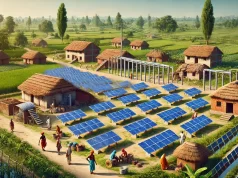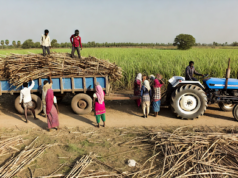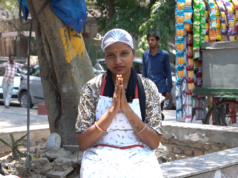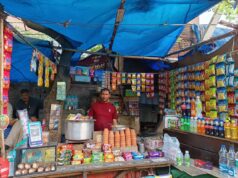PART 2 OF THE RED REMEMBRANCE: 100 YEARS OF THE RUSSIAN REVOLUTION
In our last venture, we had left the Russians on the brink of a new beginning. Lenin and his Bolsheviks had ‘stormed’ the Winter Palace and had freed the Proletariat from the crony ‘government of the banker’. Lenin even had a movie produced in 1918 called the ‘Storming of the Winter Palace’ (available on Youtube). All that was left now was to make good on their promises by ending Russian participation in the First World War, removing abject poverty, rehabilitating soldiers, arranging for sufficient provisions in the towns and countryside, while also ensuring that the ‘Workers of the World Unite!’. After all, if Russia was the only socialist country in the world, it was setting itself up for an isolated existence.
The first order of business remained the end of WW1 for Russia. However, a state without an army is usually considered unfit for peace and ripe for foreign occupation. With the Tsarist troops disbanded, the Russian army now comprised of the voluntary Red Guards and the Cheka (the secret police). They were now known as the Red Army. A ceasefire was ordered for the same and wires sent out to negotiate terms with the German state. Trotsky was Lenin’s representative at the Brest-Litovsk negotiations with Germany. Russia could no longer expect aid from its allies and if it continued fighting then anarchy was inevitable. Peace, therefore, was non-negotiable. German demands were harsh, as harsh as the Treaty of Versailles would be if not more. The war repatriations, cessions kept mounting and Russia could concede to only so much. But Trotsky was an adamant man. He adopted a policy of ‘No War, No Peace’ i.e. even if peace wasn’t brokered, Russia will not resume war. The stalemate stays. Trotsky’s actions were broadly guided by three factors: public fervour, Lenin’s temper, and a series of unfortunate events that had ultimately culminated into a Civil War in the gloomy days of December.
Petrograd had been pretty compliant when it came to the Bolsheviks. The rest of Russia was not. Exiled capitalists, Cadets (the Liberal party members), the ex-Tsars’ regiments, far-right Generals, and anybody else Lenin had offended — banded together and formed the unlikely ‘White Army’. The anti-Lenin Socialists, although less in number, refused to compromise on their ideology and didn’t join the crony capitalist army. Instead they formed the ‘Green Army’. There was also a ‘Black Army’ of the Ukrainians. Ukraine was one of the territories Russia agreed to cede to the Germans. It was to be divided into smaller principalities for the many Prussian Princes. Or so they thought. The Ukrainians have a saying, ‘If every fool wore a crown, we should all be Kings’. It is easy to see why they weren’t too happy about the arrangement.
To put it simply, if we view the Austro-Hungarian-Prussian-Ottoman alliance as one army, then Russia was now fighting four armies. A 300% increase. Not a good deliverable for the promised peace.
Lenin’s response to the debilitating situation was Communism. Not just any communism — War Communism. With Petrograd in control and a relatively compliant (albeit impassioned) population, the Bolsheviks chose to tighten state control on everything under the Soviet sun. Land was nationalised, as were industries. Strikes were banned (the revolution was over, so no need for that now). A systematic requisition of agricultural surplus was set up along with public distribution shops for rationing of commodities. Railways went from centralisation to militarisation. The Bolsheviks were not holding back.
Centralisation is the natural response of any state that faces external aggression, communist or not. However, this does not render them unaccountable for their actions. The Bolsheviks had relied on their discourse with the common man that supported them into power. Once in power, the battle to stay in power began. This time, the discourse revolved around the failures of the capitalist/imperialist state, the natural evolution to a rule of the Proletariat, and the need to move towards a harmonious Communist state. As Nikolai Bukharin and Yevgeni Preobrazhensky explained in the ‘ABC of Communism’ (published in 1920),
‘The first reason […] for the disharmony of capitalist society is the anarchy of production which leads to crises, internecine competition, and wars. The second reason […] capitalist society is not one society but two societies; it consists of capitalists, on the one hand, and of workers and poor peasants, on the other. Between these two classes there is continuous and irreconcilable enmity; this is what we speak of as the class war. […] the communist method of production must present the following characteristics: In the first place it must be an organized society; it must be free from anarchy of production, from competition between individual entrepreneurs, from wars and crises. In the second place it must be a classless society, […] society of comrades, a communist society based upon labour […] the organization shall be a cooperative organization of all the members of society […] it puts an end to exploitation’
In other words, state control was vital to prevent the exploitation of the Russian people. Bukharin and Preobrazhensky also noted the weaknesses of the system in Russia. While the Proletariat had triumphed in the October days, the reality was that most of Russia was made up of farmers and not workers. A communist consciousness had to be indoctrinated among the masses.
In November 1918, Germany surrendered to the Allied Forces. The Red Army only had to deal with the fragmented Civil War now. The fighting went on for three years with smaller skirmishes seeping into 1923. Ultimately however, the Bolsheviks triumphed once more. Peace, finally. And the cost?
FIRST WORLD WAR CASUALTIES (1914–1918)
Image Source: World War I- People, Politics, and Power, Britannica Educational Publishing (2010)
CIVIL WAR CASUALTIES (1918–23)

EXECUTIONS (1918–22)
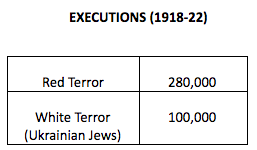
With thy kingdom secured, the Bolsheviks now only had to concentrate on removing abject poverty, rehabilitating soldiers, arranging for sufficient provisions in the towns and countryside, while also ensuring that the ‘Workers of the World Unite!’. The post-War era had its own challenges. The excessive focus on the war meant industrialization had suffered immensely since all industries had been re-directed to cater to the crises at hand. Similarly, agricultural requisitioning had created a shortage of food supply as the peasants had no incentive for increasing production. Once more the towns were going hungry. In the Bolshevik dictionary of things ‘proletariat’ consisted of the workers, soldiers, sailors, and the poor peasants and all four sections were severely suffering under the new Communist Regime.
With the war over, the need for a massive standing Red Army had drastically lessened. The Cheka was vigilant and efficient in its purges so the threat of uprisings was low. The government chose to demobilize the army as a first step to cap its expenditure. Consequently, demobilization meant there were large sections of men who were unemployed, tired, hungry and worst of all, armed. Added to this was the turmoil of transportation. The Russian Railways, it seems, had exhausted its capacity and suffered a breakdown. So the frustrated and armed ex-soldiers were now stranded frustrated and armed ex-soldiers. ‘With over two million demobilized by the early months of 1921, the Bolsheviks had discovered that the fighters of the revolution could be transformed overnight into bandits,’ Sheila Fitzpatrick.
If that wasn’t bad enough — try stranded, frustrated, armed and starved. The problem of food shortage was severe. Fear of the Government was even greater. As the centre pushed for more supplies, the police and the state officials became ruthless in their confiscation of surplus. The peasantry was resentful of the forceful acquisition of food grains. Without incentive, the productivity of farmers, the sowings dropped. In turn, the industrial workers residing in the towns suffered from hunger and began to migrate back to the villages. By 1920, the number of industrial workers reduced to 1.5 million from 3.6 million in 1917. This further handicapped the industries.
Added to labour shortage, there was also a shortage of fuel, spare parts and raw materials. ‘With the fuel crisis causing the closure of many state-operated factories, 1921 was a nightmare year for people and government alike,’ says Alec Nove. Under the buckling pressure of the economy, Rouble, Russia’s currency, collapsed. This meant no foreign exchange which in turn meant trade collapsed. Since everything was under the central control, the government could neither purchase nor import spares nor fuel. They couldn’t import anything for that matter. Furthermore, the lack of fuel meant locomotives could not be used, half of which had already been termed as ‘sick’ and couldn’t be repaired because there was no manpower or spare parts.
Could it get any worse?
‘Over-centralization’ is real.
The excessive focus on the centre created a detachment of the central government from the local government and its people in far-flung areas. There was a lot of administrative chaos, misunderstanding and misinterpretation between the various local units and the government. Resource allocation in itself became a challenge. With such a sudden and large-scale nationalization, the government found itself burdened with the managements of several industries, also known as bad management. Furthermore, since the Rouble had collapsed, there were no wages. Payments were now being made in kind. Rations and services were free of cost. ‘The result was a monstrous growth of bureaucratic tangle, an unworkable degree of centralization (‘glavkism’), waste and inefficiency,’ (Nove, 1993).
Between all of this (yes, even chaos has a centre) the main problem, however, was that although Russia was professing socialism, one main sector remained capitalistic in nature. Agriculture. Despite nationalization of land, the peasants were still producing as individuals. The lack of consumer goods in markets, forceful requisition, bad yields, mismanagement etc pushed the peasants into rebellions. In Ukraine, a peasant army headed by Nestor Makhnov fought against the Bolsheviks. In Tambov, a peasant revolt was crushed by the Bolsheviks with the use of 50,000 Red Army troops. However, the worst blow to the New Regime came from a class of sailors. In March 1921, sailors at the Naval Base of Kronstadt rose up in rebellion. The revolt occurred during the tenth party congress and several delegates had to leave in order to join the Cheka and the Red forces to crush the rebellion.
The Soviet regime was now fighting the revolutionary proletariat.
Clearly, Lenin and his Comrades had a few too many issues that needed dealing. And their response to the utter madness was no less maddening.
The Communists decided to free the markets, sort of.
Parallel to the Kronstadt revolt, in the spring of 1921, the forced requisitioning was ended and instead a fixed tax in kind was put in place. This was the first step in the beginning of the New Economic Policy (NEP). But if only. Such baby steps were shadowed by the Mother Nature’s fury. A famine in 1921–22 wrecked the country. Unaccounted millions died. An emergency relief committee was set up by the government with prominent non-communists as well as anti-communist members. Taxes were waived off in the affected provinces, mainly the Volga valley, North Caucasus and southern Ukraine. However, the government’s relief was too small to provide any ineffective help. Aid from the American Relief Administration was accepted which was feeding over ten million starved souls by 1922. Thus, the Russian economy took another blow as its major export had been food grains.
And onwards we go.
In February 1921, the ‘Gosplan’ had been implemented which was responsible for making general economic plans for the Soviet Union. Later this came to be known as the State Planning Commission. It helped in the creation of a budget and concerned itself with questions of currency, credit, banking and standardization of weights and measures and, issues such as those of prices, location of industries etc. On 17 May, 1921, the decree for nationalizing all small-scale industries was officially revoked. By early 1922, 10,000 enterprises had been denationalized and by October 1923, the number of enterprises leased for a period of 4–5years had increased by 5600. Economic centralisation was also relaxed. By August 1921, most branches of the state-controlled industries were allowed to dispose one half of their output. However, the state retained the other half. In return for this proportion, the state provided fuel and raw materials. Between July-August 1921, wages were restored and, services were one more charged. In November 1921, rationing was abolished. However, the state retained control of what has been referred to as the ‘commanding heights’ of the economy which included the banking sector, foreign trade and large-scale industries such as the railways. NEP was a form of mixed economy with private agriculture, legalized trade, and small-scale private manufacturing along with state control over the commanding heights.
Constructive reforms are always a great idea. But the Bolshevik reforms were ideologically horrible ideas. Communists inducing free markets in the first Socialist State ever? How do you explain that?
The advent of War Communism had been seen as a great leap towards Socialism and the policy had been celebrated by several party members. However, as Maurice Dobb says, ‘Lenin had no intention at first to launch into the extremes of war communism that he was driven by emergencies of war, hunger and chaos into an attempt to control everything from the centre.’ It was only natural for the NEP to be seen as a step farther away from the very essence of what the party stood for. The policy of NEP faced a similar peril as that of War Communism. Neither had been purely launched for an ideological purpose but they were going stand the Marxist test anyways. From a Communist stand-point, however, NEP was a retreat and a partial admission of failure. Milikov spoke of NEP as the beginning of the end. Prokopovitch declared that there was little hope for the establishment of a Russian national and state economy. But, as Alec Nove puts it, ‘Events, rather than the central committee, provided a potent means of persuasion.’ i.e. no money, no honey.
The government was in dire need of credit as it still needed to rebuild its railways and, most importantly, it needed fuel. And for credit, a stable currency was needed. To induce this, industries were divided into autonomous units as opposed to being part of one great ‘firm’. These units were called ‘trusts’ and each trust contained several factories of one kind. Birds of a feather flock together. These trusts were allowed to operate commercially although initially, there were limits to their operations. By early 1922, the trusts were allowed to fend for themselves. They no longer had to give preference to the State and were to make profits and manage expenditures.
As Lenin said, Communists had to learn to trade.
Lenin also fought hard for allowing concessions to foreign enterprises. He argued that by allowing foreign capitalists to exploit resources such as oilfields and timber forests, Russia stood to obtain materials it desperately needed. Foreign companies were eventually allowed but only 42 concessions were made of which 31 remained. Unlike their attempt to induce foreign capitalists, foreign trade was much more favourable and it began to steadily rise. In 1922, the Soviet Union signed a treaty with Great Britain. Through this, the centre was able to import machinery, spares, automobiles etc and in return, they had to export fuel and food surpluses. Some consumer goods were also imported to give incentives to workers. In April 1922, the Treaty of Rapallo was signed between Germany and Soviet Union that renounced war claims. By 1924, several leading European powers followed the German example. U.S.-S.U. relations remained strictly economical and trade between both countries was favourable. By 1930, the United States was Soviet Russia’s leading exporter in goods.
However, the major problem of the currency still remained. The Rouble had depreciated drastically. Bazarov had once jokingly quipped that , ‘the time is not far distant when the sum of those nominal roubles will exceed the number of all atoms or electrons of which our planet is composed.’ In October 1921, the State Bank had been created and along with the People’s Commissariat o Finance (Narkomfin) under the finance minister Sokol’nikov, reforms were carried out. By 1924, the currency had finally stabilized and the ‘tax in kind’ had been replaced by a monetary tax. In 1922, several more banks were created in order to raise credit.
1923 saw a whole new crisis (again) in the Soviet economy, one which can be seen as a consequence of NEP. 1923 was a good year for agriculture. Food production had surpassed the 1913 levels and there was demand as well as supply of agricultural produce. However, industries did not improve like the agrarian sector. There was still a shortage of spare parts, skilled labours, raw materials, transportation and, a lack of fuel. Demands for consumer products had risen but their supply had not kept pace. The initial chaotic conditions that had been created by decentralization and denationalization had created a ‘glut’ as several industrial units were in dire need of credit and had unloaded all their goods and materials in the market. This had lead to an over-crowding of the market with an excessive supply of everything. This drastically reduced the prices of Industrial goods. But, with government intervention, VSNKh (the superior state institution for management of the economy) allowed syndicates to reduce this glut.
By 1923, credit was available. In a notorious policy, to protect themselves, the Industrial units joined forces for the purpose of joint-selling. This placed them in a strong position to demand higher prices. The state industries were not producing to their capacity and, therefore, could not compete to control the market price. Thus with good yields and competition in the market, the peasants made good profits. And they lost their profits to inflation race as the price of industrial goods steadily rose while, in comparison, the price of agricultural goods was less. By October 1923, the Industrial goods were three times more than the agricultural prices. This was not only bad for the economy but ideologically, ‘Smychka’, the alliance between the proletariat and the poor peasantry was now threatened.
The Scissors crisis was self-correcting as industrial production was steadily rising. This meant that the quantity of industrial products in the market was only bound to increase and thus reduce the prices. Although, the government did take several concrete steps to control the crisis. They tried to bring down the cost of production by reducing the excessive staff that was employed. There was more stress on optimal utilization of the efficiency of machines and the staff. Conscious efforts were made to bring down the inflation. A People’s Commissariat for Trade was set-up which attempted to (with success) widen the state trade and sell commodities in rural areas at prices that were lower than those offered by Nepmen. Thus, by 1924 the crisis was averted and the blades had closed. ‘So, the NEP system of mixed economy weathered the storm, and with the establishment of a stable currency and balanced budgets, entered into calmer waters by 1924,’ says Alec Nove. In fact, the period between 1924 and 1925 is seen as a period of ‘High NEP’ as the economic situation was at its best.
Perhaps Lenin’s promises were finally being realized. If only he had lived to see them. In 1924, after a prolonged illness, the father of the Revolution passed away.
By 1925, the recovery of the economy was complete. For further economic development, the centre needed to build new infrastructure as well as repair and renovate the existing infrastructure. For this reconstruction, the government needed capital and resources, and the government was not willing to share. The stage for hard-core Communism was finally set.
And this time, it was Stalin at the helm.
REFERENCES
Nove, Alec (1990) An Economic History of the USSR, Penguin Books
Moss, Walter G. (2004), A History of Russia [Vol II Since 1855], Anthem Press
Fitzpatrick, Sheila (1994), The Russian Revolution, Oxford University Press
Kenez, Peter (2006), A History of the Soviet Union from the Beginning to the End 2nd Edition, Cambridge University Press
Moss, Walter G. (1997), A History of Russia Vol 2, New York, McGraw Hill
Keep, John L. H. (1976), The Russian Revolution, New York, W. W. Norton &Company
Post Disclaimer
The opinions expressed in this essay are those of the authors. They do not purport to reflect the opinions or views of CCS.


